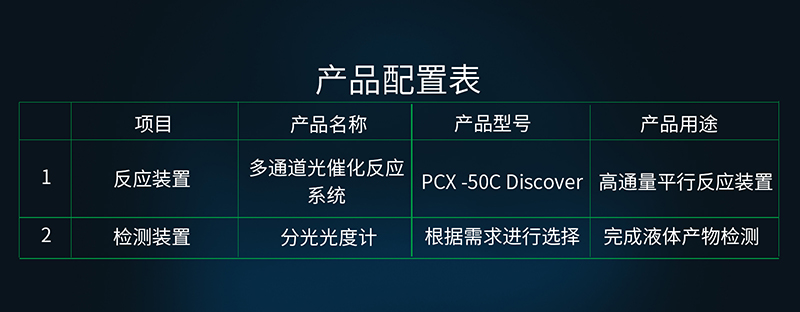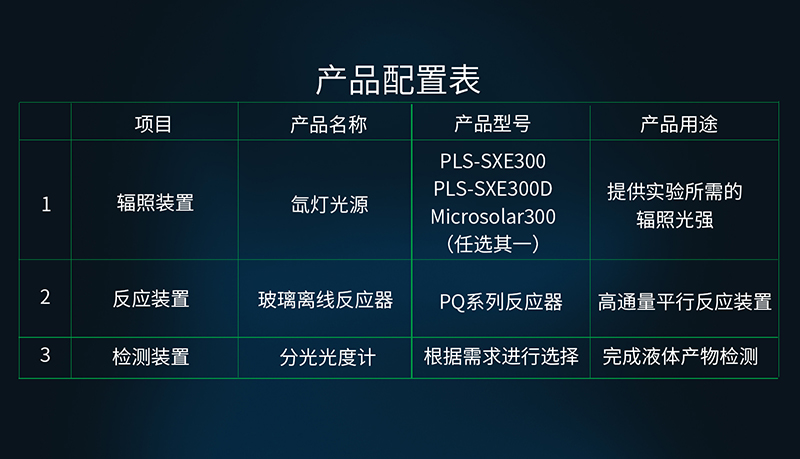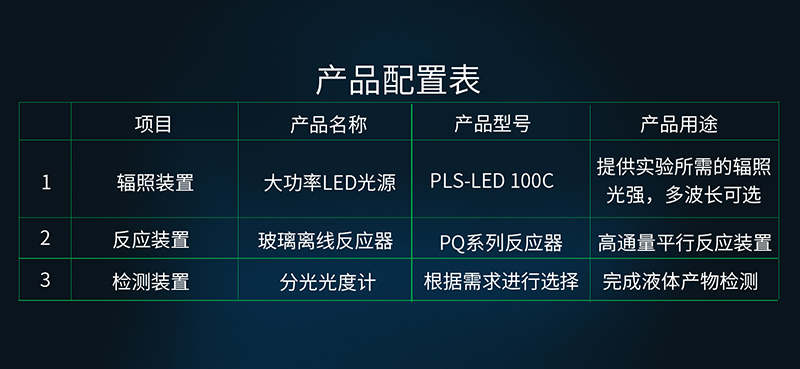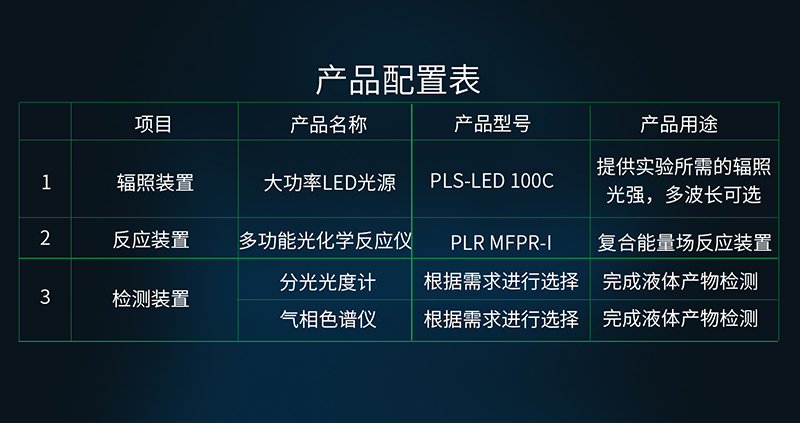Photodegradation of pollutants and organic photosynthesis typically occur in a solution system, with product detection often involving the use of a UV-visible spectrophotometer for liquid products. However, controlling the loss of liquid and removing solid catalysts mixed in liquid products are crucial factors affecting the accuracy of the entire setup. Based on these experimental characteristics, we have purposefully designed the following configuration schemes:
Configuration One: Multi-channel Photocatalytic Reaction System + UV-Visible Spectrophotometer (High-throughput Catalyst Performance Screening)
Configuration Two: Xenon Lamp Light Source + Glass Offline Reactor + UV-Visible Spectrophotometer (Volume can be flexibly selected as required)
Configuration Three: High-Power LED Light Source + Glass Offline Reactor + UV-Visible Spectrophotometer
Configuration Four: Xenon Lamp Light Source + Multi-functional Photochemical Reactor + UV-Visible Spectrophotometer (Capable of combined energy field testing such as light, electricity, heat, and pressure)

Advantages of the Scheme:
1.High-throughput parallel reaction setup, capable of conducting parallel catalyst performance screening experiments with 1-9 reaction positions.
2.Illumination from the bottom, utilizing optical-grade quartz bottle bottoms to ensure efficient utilization of incident light.
3.Modular design, allowing for quick replacement of required irradiation lamp modules.
4.Irradiation lamp modules utilize LED light beads, with multiple wavelength options for flexible combinations.
5.Water-cooling temperature control, enabling constant temperature maintenance of reaction vessels or optimization testing of reaction temperature conditions.


Advantages of the Scheme:
1.Utilizing xenon lamp as the irradiation source provides incident light closer to the solar spectrum.
2.Xenon lamp source offers a light power density of 1500-2000 mW/cm², making it more effective at stimulating reactions.
3.Employing glass offline reactors with high physical and chemical stability, minimizing reactivity with reaction materials.
4.Quartz material used for the reactor's upper cover achieves light transmittance of over 95%, reducing spectral distortion and ensuring more accurate calculation of incident photons.
5.Offline testing allows flexible pairing with various detection devices.


Advantages of the Scheme:
1.Adopting high-power LED light source as the irradiation source with its cold light characteristics effectively avoids the influence of infrared light on experimental results.
2.High-power LED light source features high efficiency, long lifespan, and a wide range of wavelengths.
3.Diverse light output modes including continuous, pulsed, and stepped modes enable catalyst testing under different light intensities.
4.Utilizing glass offline reactors with high physical and chemical stability minimizes reactivity with reaction materials.
5.The reactor employs a quartz upper cover achieving light transmittance of over 95%, reducing spectral distortion and ensuring more accurate calculation of incident photons.
6.Offline testing allows flexible pairing with various detection devices.


In comparison to the above three configurations, this approach replaces the reaction setup with the PLR MFPR-I Multifunctional Photochemical Reactor, which equips the entire system with the capability to perform flexible combination of various energy fields for material performance testing. This enables experimenters to characterize catalyst performance from multiple dimensions and explore potential optimization directions for catalysts.
Advantages of the Solution:
1.Utilization of a xenon lamp as the irradiation light source enables obtaining incident light closer to solar spectrum.
2.Xenon lamp light source achieves a light power density of 1500-2000 mW/cm², facilitating easier initiation of reactions.
3.High testing parameters enable conducting photodegradation of pollutants and organic photosynthesis with specific temperature and pressure requirements.
4.Strong compatibility of the apparatus is ensured by utilizing glass lining, allowing inert reactor compatibility with the majority of photochemical reactions.
5.Negative pressure automatic gas sampling reduces human error for reactions generating gases during photodegradation of pollutants and organic photosynthesis.
6.Rich and diverse functionalities allow both top and side illumination, accommodating various photodetectors, and supporting photodegradation as well as photoelectrochemical testing.
